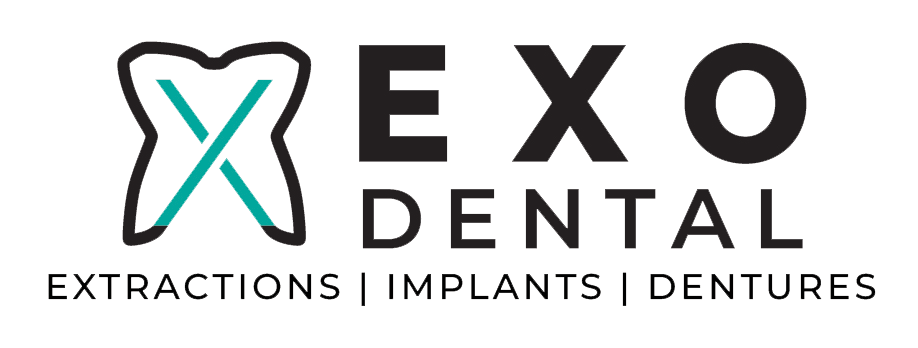How 3D Printing is Transforming Dentures and Dental Implants
Dentistry is seeing an exciting transformation thanks to advancements in technology, especially 3D printing. This cutting-edge technology is revolutionizing how dentists create dentures and dental implants, making the process faster, more accurate, and more comfortable for patients. If you’ve ever wondered how dental prosthetics are made or want to understand the latest trends in dental care, you’re in the right place.
3D printing allows for precise customization, which means that dentures and implants can be tailored to fit your mouth perfectly. Unlike traditional methods, which can be time-consuming and often less precise, 3D printing streamlines the entire process, cutting down on waiting times and improving the quality of the final product. Using computer-aided design (CAD), dentists can plan and execute treatments with a high level of detail, ensuring better outcomes for your oral health.
With that in mind, we’ll explore how 3D printing technology is being applied to dentistry, transforming the way full and partial dentures and dental implants are created and placed. By understanding these advancements, you’ll see how modern technology is making dental care more efficient and effective.
The Basics of 3D Printing in Dentistry
3D printing, also known as additive manufacturing, creates objects by adding material layer by layer. In dentistry, this technology helps create highly detailed and customized dental devices. It starts with a digital model designed on computer-aided design (CAD) software. The printer then builds the device from materials like resin or metal, following the digital model precisely.
History and Evolution in the Dental Field
3D printing has come a long way since its inception. It started as a method for rapid prototyping in the 1980s. Over the years, as technology advanced, its applications expanded. In dentistry, 3D printing began gaining traction in the early 2000s. Today, it’s revolutionizing how dental prosthetics and implants are made, offering faster and more accurate results.
How 3D Printing Works for Creating Dental Devices
Creating dental devices with 3D printing involves several steps:
1. Digital Scanning: A digital scan is taken of the patient’s mouth using advanced imaging technology. This scan creates a precise digital model.
2. Design: Dentists use CAD software to design the dental device, whether it’s a denture or implant.
3. Printing: The digital design is sent to a 3D printer, which constructs the device layer by layer from biocompatible materials.
4. Finishing: Once printed, the device is polished and fine-tuned for a perfect fit and function.
Transforming Full and Partial Dentures
3D printing significantly speeds up the denture-making process. Traditional methods can take weeks, but 3D printing can produce a denture in just a few days. This rapid production doesn't sacrifice precision. The digital design ensures that each denture fits precisely, reducing the need for multiple adjustments.
Benefits of 3D Printed Dentures Over Traditional Methods
3D printed dentures offer numerous advantages, such as:
1. Accuracy: Custom-made for each patient, leading to better fit and comfort.
2. Durability: Made from high-quality materials that are strong and long-lasting.
3. Efficiency: Faster to produce, which means less waiting time for patients.
4. Biocompatibility: Materials used are safe and well-tolerated by the body, reducing the risk of allergic reactions.
Customization Options for Better Fit and Comfort
One of the standout features of 3D printed dentures is the level of customization available:
1. Perfect Fit: Digital scans ensure that the denture matches the unique contours of your mouth.
2. Adjustable Design: Easy to modify if adjustments are needed, ensuring maximum comfort.
3. Aesthetic Choices: Options for color and shape can be tailored to match natural teeth, enhancing the appearance of your smile.
These advancements offer a massive improvement over traditional dentures, providing a more comfortable, efficient, and personalized solution for patients.
Steps Involved in Creating 3D Printed Dental Implants
Creating 3D printed dental implants involves several precise steps:
1. Digital Imaging: The process starts with taking detailed scans of the patient's mouth. These scans provide a 3D model of the jaw and teeth.
2. Design: Using CAD software, the implant is designed to fit the patient's unique anatomy.
3. Printing: The design is sent to a 3D printer, which creates the implant layer by layer using biocompatible materials.
4. Post-Processing: After printing, the implant is polished and checked for accuracy before placement.
Advantages of 3D Printed Implants for Patients and Dentists
3D printed dental implants offer numerous benefits:
1. Precision: The exact fit eliminates many of the issues with traditional implants, such as discomfort or misalignment.
2. Speed: The production process is much quicker compared to conventional methods, reducing wait times for patients.
3. Customization: Each implant is tailored specifically to the patient's mouth, ensuring a natural look and feel.
Success Rates and Long-Term Benefits
3D printed dental implants have high success rates due to their custom fit and precision. They integrate well with the jawbone, providing stable and long-lasting results. The durability of these implants means they can last for many years, reducing the need for replacements. Patients report higher satisfaction with 3D printed implants as they are comfortable and function just like natural teeth.
Integration with Digital Imaging and CAD/CAM Technology
The use of advanced technologies like digital imaging and CAD/CAM enhances the accuracy and efficiency of dental procedures. Digital imaging provides a detailed map of the mouth, which is essential for creating precise dental devices. CAD/CAM technology allows for the design and manufacture of these devices, ensuring they meet the highest standards of fit and function.
Impact on Patient Experience and Satisfaction
Patients benefit greatly from these advanced technologies:
1. Comfort: Digital design ensures a perfect fit, which increases comfort.
2. Efficiency: Faster production means less time spent in the dentist's chair.
3. Confidence: The natural look and feel of 3D printed devices help boost patients' confidence.
Future Trends and Innovations in 3D Printing for Dental Applications
3D printing in dentistry is continuously evolving. Emerging trends include:
1. Material Innovation: Development of new biocompatible materials that mimic natural teeth more closely.
2. Automation: Increased automation in dental practices, making the process even faster and more efficient.
3. Personalization: Enhanced customization options, allowing for even more personalized dental care.
The Power of 3D Printing: Transforming Dentures and Dental Implants
3D printing is revolutionizing dental care by making processes quicker, more accurate, and highly customizable. It transforms how full and partial dentures and dental implants are created and fitted, ensuring better outcomes for patients. At Exo Dental, we utilize these cutting-edge technologies to provide top-notch dental care. From precise digital imaging to custom-fit prosthetics, our methods ensure you get the best results.
If you're considering dental implants or dentures and want to experience the benefits of advanced 3D printing technology, contact Exo Dental today. Let us help you achieve a healthier, more confident smile with our innovative
3D-printed dentures in Arkansas!
Don't hesitate to contact Exo Dental in Rogers to discuss your tooth removal and oral surgery options. Hablamos Español.

